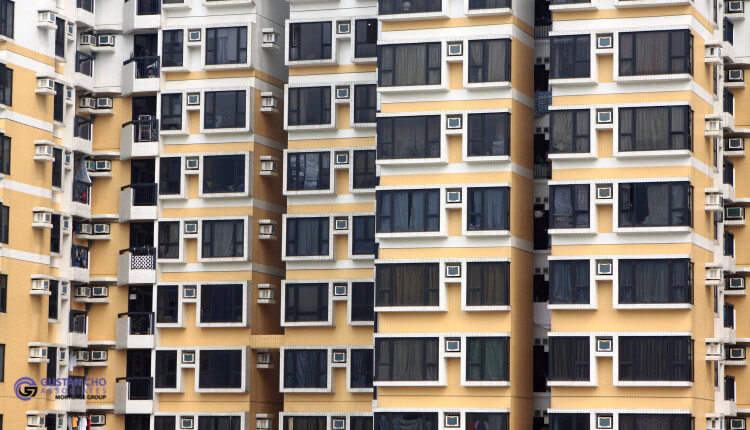Rental Property Mortgage Guidelines
This guide covers rental property mortgage guidelines. New rental property mortgage guidelines by Fannie Mae and Freddie Mac make financing on rental properties easier. Mortgage Lenders for Bad Credit has launched non-QM loans for investment home financing. Non-QM loans are alternative, non-traditional loan programs that differ from conforming loans. Dale Elenteny a senior mortgage loan originator at Mortgage Lenders Bad Credit says the following about rental property mortgage guidelines:
More and more investors are seeking real estate as their investment of choice. After the 2008 housing and credit meltdown, real estate is becoming more and more favorable as an investment vehicle for most investors.
This is a summary of the rental property mortgage guidelines concerning investment property financing, including single-family rentals, duplexes, or multi-unit buildings, as dated March 26, 2025. While focused on conventional loans, I will also mention FHA and VA loans where appropriate. Because of the increased risk factors associated with rental properties, lenders impose stricter requirements than for a borrower’s primary residence. In the following paragraphs, we will cover rental property mortgage guidelines.
What Is a Rental Property Mortgage?
A rental property mortgage, or an investment property loan, is a credit facility extended for purchasing or refinancing real estate that an individual plans to rent out rather than occupy. In addition to your finances, the property’s possible rental income is considered during underwriting.
Secure Financing for Your Rental Property Today!
Apply Now And Get recommendations From Loan Experts
General Eligibility Guidelines on rental property mortgage guidelines
Lenders screen clients more rigorously for rental properties to mitigate the risk of tenant vacancy or default. Here’s what you’ll need:
Credit Score requirement on rental property mortgage loans
- For conventional loans, 620 is the minimum, but with more than 700, change ces to receive better rates and higher terms.
- Even greater scores (740+) may enable you to reduce your down payment requirement slightly.
Down Payment requirements on rental property mortgage loans
- Single-Family Rental: A minimum of 15-20%.
- 2-4 Unit Properties: A minimum of 25% for conventional loans.
- More units or riskier profiles (for instance, lower credit) could drive it up to 30%.
- Cash reserves do not normally cover the downpayment.
- Only liquid assets, gifts, or grants can.
Debt-to-Income (DTI) Ratio rental property mortgage guidelines
- Most lenders cap this at 45%. 36-40% is preferred.
- DTI can be offset with rental income (more below), but only a portion can be counted.
Cash Reserves on rental property mortgage loans
- There is a requirement of 6 months of PITI payments per property; these include principal, interest, taxes, and insurance.
- Example: $2,000/month PITI x 6 = $12,000 per rental and primary home reserves.
Experience on rental property
- First-time investors are eligible for this program, but some lenders will cap you at 4-10 financed properties total (Fannie Mae/Freddie Mac cap is 10 financed properties).
- Having some prior landlord experience may aid your approval chances along with the loan’s terms.
Income on rental property
- Consistent and verifiable income must come from your job or other sources besides rent.
- Provide two years’ worth of tax returns if you’re self-employed.
rental Property Requirements
- The rental property must fulfill some basic requirements:
Eligible Types of rental property
- These include single-family homes, condos (warrantable), townhouses, and two to four-unit multifamily properties.
- Buildings with five or more units are usually needed.
- Commercial Loans, not residential investment mortgages.
Condition of rental property
- Moving ready or needs minor repairs.
- Lenders expect it to be rent-ready immediately.
- A competent appraiser must perform a value and condition appraisal (similar to FHA’s Minimum Property Standards but more lenient).
Occupancy:
- It should be leased or planned to be rented out, not for personal consumption.
- Short-term rentals (like Airbnb) may qualify with verification of stable income, but the rules vary from lender to lender.
Loan-To-Value (LTV) on rental property financing
- Single-family max 85% LTV (15% down).
- 2-4 Units max 75% LTV (25% down).
- Cash-out refinances are usually limited to 70-75% LTV.
Insurance
- Required landlord insurance (DP-3 policy) covers property damage, liability, and loss of rent income.
- Rental Income in Underwriting.
- Lenders consider the property rental income to qualify you, but there are limits.
Existing Leases
- If rented out previously, 75% of the rent can be utilized to offset PITI.
- Example: $2,000 rent x 75% = $1,500 will be contributed toward the $2,000 PITI, cognitively improving your DTI.
No Tenants Yet
- Lenders use lower market rent (from the appraisal done) or projected lease value, still at 75%.
- Needs empirical evidence in rental management or a strong market analysis.
- Vacancy Factor: The 25% reduction applies to gaps due to vacancies, upkeep, and their management.
Loan conditions (March 2025)
- Interest rates are higher than those for primary residences.
- Expect 7 to 8% for a thirty-year fixed loan (compared to 6.2% for an owner-occupied loan).
- A risk premium of around 0.5-1.5% gets tacked on, too.
rental property Loan Types
- Fixed-Rate: 15 or 30 years. Stable payments.
- Adjustable Rate (ARM): 5/1 or 7/1 ARMs are set lower, for example, 6.5%, which is great for short-term holders.
- Private Mortgage Insurance (PMI): It is compulsory if the payment is less than twenty percent.
- Therefore, monthly payments should be increased (0.5-1% of loan yearly).
Loan Limits
These are set according to the boundaries set by Fannie Mae and Freddie Mac ($806,500 for a single-family in 2025, but higher in expensive areas).
Alternatives
FHA Loans
- For two-unit residences only, the owner must occupy one unit (owner-occupied).
- 3.5% down for those with a credit score of 580 or more. MIP is mandatory.
- They are not considered rental properties but are a pathway to real estate investment.
VA Loans
- Like an FHA, you must occupy one unit in a two-unit property.
- 0% down payment for veterans, but restrictive rules about rental income apply.
Portfolio Loans
- Loans with no restrictions from banks or private lenders.
- More flexible terms, for example, a 10% down payment and higher DTI, but interest rates can go up to 8 or even 10%.
Hard Money Loans
- Short-term (1-3 years), asset-based for fix-ups, flips, or quick buys.
- 10-15% down, rates over 10-12%, and other high fees.
Steps To Obtaining A Rental Property Mortgage
- Pre-Approval: Send your credit details for a preliminary check (financials include credit, income, and assets).
- Property Search: Identify cash flow-positive properties (Rent income surpasses PITI after expenses).
- Offer: Add a financing contingency; the appraisal occurs after acceptance.
- Underwriting: The lender confirms the property’s potential income and your available reserves.
- Closing: Pay the down payment, apply closing costs (2-5 percent of the loan), and purchase landlord insurance within the set 30-45 day period.
Advantages
- Using home equity helps improve wealth.
- Rental properties help lessen the cost of mortgages.
- Loan tax benefits generate savings (interest, depreciation, and other expenses).
Disadvantages
- Both the rate and down payment are higher than primary homes.
- Cash flow can be adversely affected by high vacancy or poor tenants.
- Risk of foreclosure in case rents do not cover bills.
Current Trends (March 2025)
- Mortgage rates for basic homes are 6.2%, trending towards 7.5% for rental properties—fixed at 30-years.
- As per NAR, the demand for multifamily units is rising 8% annually due to investors trying to benefit from rental yields amid a constricting housing market.
- Existing rental cash-out refinances are also rising and are aimed at funding new purchases.
Suppose you’ve got the capital and a higher risk tolerance. In that case, a mortgage on a rental property can start generating passive income. Do you have plans for a single-family home or multi-unit dwellings? What problems are you encountering, if there are any?
Options With Rental Property Financing
Prior to now, Fannie Mae and Freddie Mac were the only investment property financing programs available other than hard money loans. Gustan Cho Associates has launched many rental non-QM loan investment property loans for real estate investors. Here are some considerations investors of rental properties need to take into consideration:
- Rental Property Mortgage Guidelines differs depending on the loan program
- Down Payment Requirements
- Mortgage Rates are higher on investment properties versus owner-occupant and second homes
- Reserve requirements
Down Payment Rental Property Mortgage Guidelines
Rental property mortgage guidelines on rental properties are much higher than for owner-occupant homes. Credit, income, and debt-to-income ratios on recourse investment property mortgages are much stricter than for owner-occupied homes. Most lenders require a 20% to 30% down payment on investment property loans. Investment homes are considered much riskier loans versus owner-occupant loans by lenders. Therefore, lenders want borrowers with skin in the game. A large down payment by buyers is more skin in the game by borrowers.
Traditional Investment Home Mortgage Loans
Fannie Mae and Freddie Mac set investment property mortgage guidelines on conventional loans. There are credit scores, debt-to-income ratios, and down payment requirements set by Fannie Mae and Freddie Mac guidelines. Here are the Fannie Mae and Freddie Mac down payment rental property mortgage guidelines: The Fannie Mae Standard Eligibility Requirements for Investment Mortgages are the following:
- Purchase | Investment Property (Maximum LTV, CLTV, HCLTV)
- 1 unit investment homes with 80% LTV or 15% down payment
- 2-4 units investment home financing requires 75% LTV or 25% down payment
- Cash-Out Refinance Mortgages Investment Property Financing (Maximum LTV, CLTV, HCLTV)
- 1 unit rental investment homes—75% Loan To Value
- 2-4 multi-family units investment property homes—70% loan-to-Value and/or 30% down payment
- Freddie Mac Maximum LTV/TLTV/HTLTV Ratio Requirements for Investment Property Loans
- Purchase Investment Homes | Investment Property (Maximum LTV, CLTV, HCLTV)
- 1 unit investment properties—85% LTV or 15% down payment
- 2-4 multi-family investment homes—75% loan-to-Value or 25% down payment
- Cash-Out Refinance | Investment Property (Maximum LTV, CLTV, HCLTV)
- 1 unit investment homes—75% loan-to-Value
- 2-4 multi-family units—70% loan-to-Value
Non-QM Rental Property Mortgage Guidelines
Mortgage lenders for bad credit are experts in originating and funding non-QM investment property loans:
- 20% to 30% down payment
- Investment loan programs are available for real estate investors
- We can use property cash flow analysis
- The property qualifies based off of debt-service coverage
- This is calculated by dividing PITIA (principal, interest, taxes, insurance, and association dues) by rent
- No personal debt-to-income ratios required for non-traditional investment property loans
Mortgage Lenders for Bad Credit also offers bank statement loans for self-employed borrowers. No federal income taxes are required. Income is qualified by average monthly bank statement deposits. Withdrawals do not matter. Mortgage Lenders for Bad Credit is a very aggressive lender where we do not just close loans but close them on time.
Qualifying Factors For Investment Mortgage Loans
Every case scenario can be different with alternative financing:
- Down payment requirements vary
- Minimum down payment on investment property loans is normally 20%
- Mortgage rates vary, and loan-level pricing adjustments are a factor depending on the following:
- Borrowers Credit Scores
- Type of property
- Number of units/occupancy type
- Debt-to-income ratios
- Loan-to-value
- Reserves of acceptable sources of reserves are checking, savings accounts, bonds, mutual funds, certificates of deposits, money markets, trust accounts, stocks, bonds, retirement accounts, and cash value of life insurance policy
Contact mortgage lenders for bad credit at 800-900-8569 or text us for a faster response to learn more about rental property mortgage guidelines. Or email us at gcho@gustancho.com.
We’ll help you understand your options and guide you through the process of securing financing for your rental property
Apply Now And Get recommendations From Loan Experts





